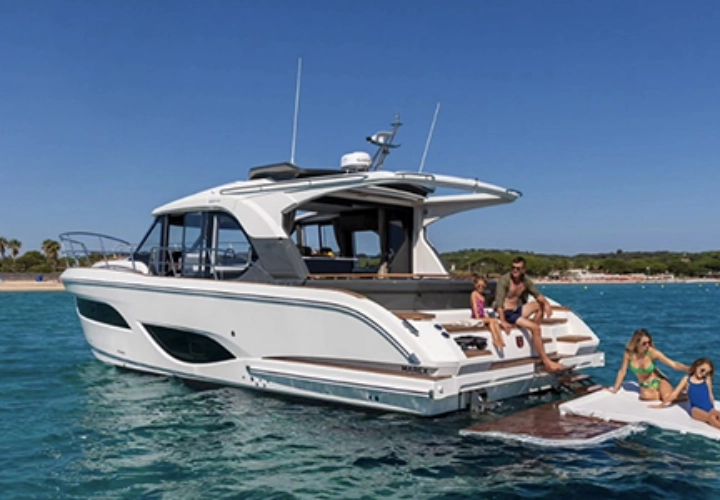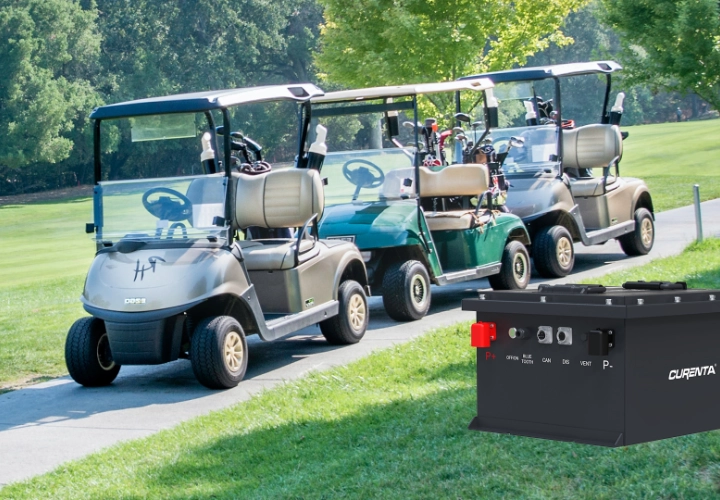Learn More >
Is a Marine Lithium Iron Phosphate Battery the Game-Changer Your Boat Needs?
When looking for reliable power solutions for marine applications, boating enthusiasts and professionals often wonder: “Is a marine lithium iron phosphate battery really worth it?” In this deep-dive article, brought to you by CURENTA BATTERY, we answer that question and explore the technology, benefits, installation tips, and real-world performance. If you want to make a confident switch for your vessel, keep reading.
🛥 What Is a Marine Lithium Iron Phosphate Battery?
A marine lithium iron phosphate battery (LiFePO₄) is a specialized lithium-ion battery engineered for marine environments. Compared with traditional lead-acid batteries, it uses iron phosphate as the cathode material. The result is a battery that is lighter, safer, more efficient, and has a longer lifespan.
At CURENTA BATTERY, we design these marine-grade lithium iron phosphate batteries to resist corrosion, withstand vibrations, and deliver consistent performance on the water. With sealed casings, integrated battery management systems (BMS), and enhanced protection features, they ensure safety and efficiency.
🔋 Why Choose Marine Lithium Iron Phosphate Batteries?
1. Exceptional Cycle Life
Perhaps the biggest advantage of a marine lithium iron phosphate battery is its high cycle life. Typically offering 2,000–5,000 full cycles, marine LiFePO₄ batteries outlast lead-acid options, which usually manage around 500–800 cycles. This translates into years of dependable service with fewer replacements.
2. Lightweight and Compact
Weight is a critical concern for boats, and this is where marine lithium iron phosphate batteries truly shine. Being significantly lighter than lead-acid batteries, they free up valuable weight, contributing to improved fuel economy and better boat stability. Plus, their compact size makes installation easier and optimizes space usage onboard.
3. High Depth-of-Discharge (DoD)
Lithium iron phosphate batteries can safely be discharged up to 80–100% with little impact on lifespan. The fresh power they offer is fully available. In contrast, lead-acid batteries should generally be cycled only to 50% to avoid damaging, meaning you need double the battery capacity for the same usable energy.
4. Rapid Charging with Low Internal Resistance
Marine trips often involve power-hungry electronics and recharging at marinas with limited time frames. A marine lithium iron phosphate battery charges significantly faster than lead-acid batteries, thanks to its low internal resistance. This empowers boaters to spend less time plugged in and more time at the helm.
5. Safety and Stability
Safety isn’t negotiable on water. The inherent chemistry of lithium iron phosphate is more thermally stable and less prone to thermal runaway compared to other lithium-ion batteries. Add to this the onboard Battery Management System (BMS) that guards against overcharge, undervoltage, overcurrent, and thermal extremes, and you’ve got a product that’s purpose-built for marine environments.
⚙️ Marine Lithium Iron Phosphate Battery vs. Lead-Acid: A Detailed Comparison
| Feature | Lead-Acid Battery | Marine Lithium Iron Phosphate (LiFePO₄) Battery |
|---|---|---|
| Cycle Life | ~500–800 cycles | ~2,000–5,000 cycles → up to 10× longer lifespan |
| Depth-of-Discharge | ~50% recommended | ~80–100% usable without lifespan reduction |
| Weight | Heavy | ~40–60% lighter |
| Energy Density | Lower | Higher |
| Charging Time | Slower | 40–60% faster charging |
| Maintenance | Water top-up required | Maintenance-free |
| Self-Discharge Rate | ~3–5% per month | <2% per month |
| Safety | Risk of leaks, gas | Sealed, BMS-protected, stable chemistry |
Clearly, the marine lithium iron phosphate battery outperforms in nearly every critical metric.
🌿 Environmental and Operational Advantages
Reduced Waste & End-of-Life Recyclability
With longer cycles, marine LiFePO₄ batteries mean fewer replacements and, thus, less waste. Plus, iron phosphate is non-toxic and increasingly recyclable, making it an environmentally responsible choice.
No Venting or Off-Gassing Onboard
Unlike flooded lead-acid batteries, lithium iron phosphate batteries are sealed and maintenance-free, with no dangerous hydrogen emissions. This enhances life onboard by avoiding corrosive damage and fire risk.
Efficient Low-Temperature Performance
Marine operations often face cooler climates, and LiFePO₄ chemistry maintains strong performance down to –20°C (check specific model ratings). Some products like ours at CURENTA BATTERY also include integrated heaters to support charging in subzero conditions.
✔️ Choosing the Right Marine Lithium Iron Phosphate Battery
1. Battery Capacity & Voltage
Match your capacity (Ah) and voltage (12 V, 24 V, or 48 V) to your boat’s power demands. Our line ranges from 50 Ah to 300 Ah per 12 V battery, and we offer easily scalable setups for higher-voltage systems.
2. Integrated BMS Features
Look for BMS that manages voltage equalization, current limits, thermal control, and advanced protection. Remote monitoring via Bluetooth or CANbus is also a plus for real-time insights and alerts.
3. Physical and Environmental Resilience
Your battery housing should be waterproof (IP67-rated or better) and sturdy enough for marine conditions. Lightweight materials and anti-vibration mounts ensure long-term durability.
4. Certification and Warranty
Choose batteries that are UL, CE, ABYC, and IMO certified. CURENTA BATTERY provides a 10-year limited warranty, underscoring our confidence in the lifespan performance of our marine lithium iron phosphate batteries.
5. Support and Scalability
Plan for future system upgrades like solar panels, wind turbines, or shore-based charging. Modular LiFePO₄ batteries make it easy to expand or reposition capacity.
🔌 Installing and Maintaining Your Battery
Placement Tips
Install in a well-ventilated compartment, secure in anti-vibration mounts, and avoid direct sun exposure. Ensure the area is dry, clean, and properly grounded.
Wiring Standards
Use marine-grade cables rated for the intended current. Connect positive and negative poles securely to avoid resistance. Follow ABYC guidelines for cable routing and circuit protection.
Charging Protocols
Charge via smart marine converters, DC‑DC chargers, or MPPT solar controllers configured for LiFePO₄. Avoid conventional absorptive charging stages unsuitable for lithium batteries—check for compatibility before connecting.
Proper Discharge Management
A BMS usually limits discharge at around 10–20% reserve. Most users discharge to 20–30% before recharging to maximize capacity while avoiding BMS cutoffs.
📐 Real-World Use Cases
Cruising Sailboats
With ample solar/wind recharge, you can go days off-grid with LiFePO₄’s deep discharge and recharge tolerance—ideal for long passages.
Fishing & Charter Boats
Rapid charging during dockside breaks ensures power for fish finders, deck lights, and navigation gear, all powered reliably.
Pontoon and Trawler Boats
With enhanced accessories like refrigeration, lighting, and entertainment systems, LiFePO₄ batteries deliver stable, uninterrupted performance.
🔧 Troubleshooting Common Concerns
“My alternator won’t fully charge the battery.”
Ensure your alternator or charger has a LiFePO₄-compatible charging profile and sufficient output. Use a DC‑DC converter if needed.“Can it handle vibration, salt spray, and humidity?”
Yes—CURENTA BATTERY’s marine lithium iron phosphate line uses IP67-rated, vibration-resistant housings.“What happens when the battery is fully discharged?”
The BMS prevents permanent damage by disconnecting at low voltage. Recharge promptly to restore full performance.“Is it safe?”
Yes. The LiFePO₄ chemistry is inherently stable and combined with certified BMS, the risk of overheating is extremely low. We also provide independent third-party certifications for peace of mind.
💼 Choosing CURENTA BATTERY’s Marine Lithium Iron Phosphate Lineup
Why choose us as your lithium battery provider? At CURENTA BATTERY, our marine lithium iron phosphate batteries are designed with these advantages in mind:
Tailored for harsh marine conditions
Fully sealed, waterproof, and resistant to temperature extremes
Smart BMS with Bluetooth/CANbus and firmware upgrades
Expandable systems for higher voltage and capacity needs
Long warranties and global support network
🌍 What the Industry Is Saying
While marine lithium iron phosphate batteries are still newer to the market, the trend toward lithium is gaining substantial traction:
Cruising Magazine recently conducted cross-technology comparisons and ranked marine LiFePO₄ superior in energy output per pound.
Boating Industry highlighted that many new high-end vessels now come standard with lithium iron phosphate banks.
An independent survey of yacht owners revealed over 80% reported significant weight reduction and improved charge time after switching to marine LiFePO₄ batteries.
🚀 Final Verdict: Is a Marine Lithium Iron Phosphate Battery Worth It?
For most boat owners, the switch to a marine lithium iron phosphate battery makes financial and practical sense—especially for those prioritizing energy efficiency, safety, onboard comfort, and long-term reliability. The upfront cost may be higher, but with years of sustained service, lower total cost of ownership, and significantly improved vessel performance, it’s a smart investment.
✅ What You Should Do Next
Assess your current energy system—calculate how many Ah and what voltage you need during typical use.
Determine charge resources—solar panels, alternator, or shore power—and ensure they're LiFePO₄ compatible.
Contact CURENTA BATTERY for a system proposal that matches your boat, lifestyle, and expansion goals.
Plan the swap, including removal of old batteries, system wiring adjustments, and battery placement.
Enjoy the reliability, fast charging, and peace of mind that come with marine lithium iron phosphate battery technology.
In Summary:
If you value longer lifespan, lighter weight, faster charge, enhanced safety, and no maintenance, then a marine lithium iron phosphate battery—especially from CURENTA BATTERY—is likely the game-changer your boat needs.
Disclaimer: Always consult a marine electrician or technician before modifying your onboard power system. Voltage mismatches, incompatible chargers, or improper connections can pose safety hazards. CURENTA BATTERY is not responsible for installations performed without professional oversight.
About CURENTA BATTERY
CURENTA BATTERY specializes in advanced lithium iron phosphate energy solutions for marine, RV, off‑grid solar, and industrial markets. Our marine lithium iron phosphate line is UL‑certified, includes smart BMS integration, and is backed by a 10-year limited warranty and global service support.

 English
English German
German Czech
Czech French
French Italian
Italian Hungarian
Hungarian Russian
Russian Japanese
Japanese Korean
Korean Arabic
Arabic Spanish
Spanish Portuguese
Portuguese Danish
Danish


 WhatsApp
WhatsApp